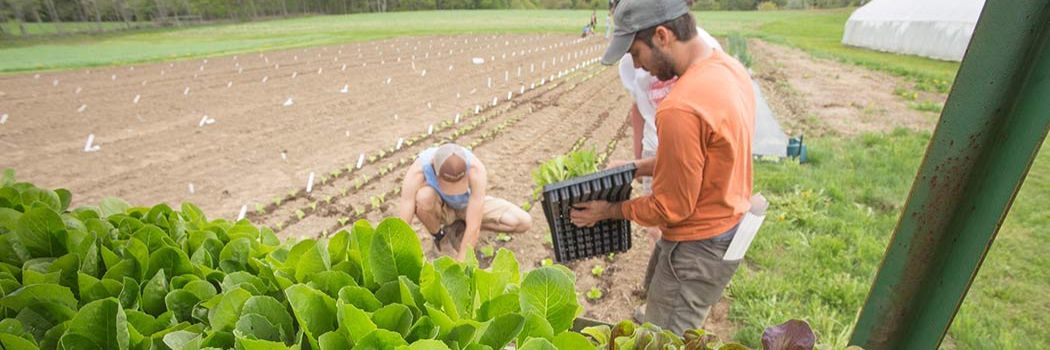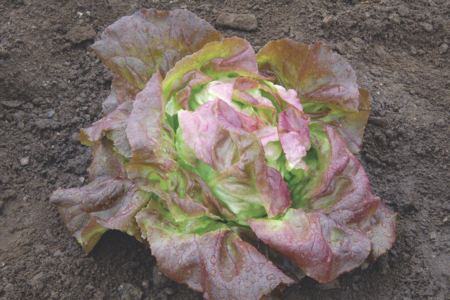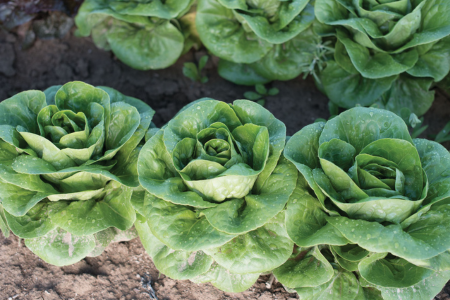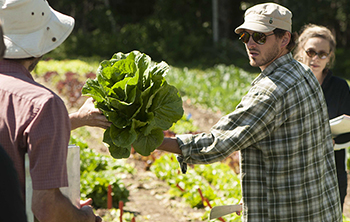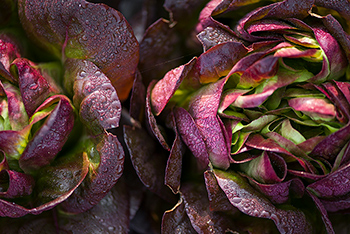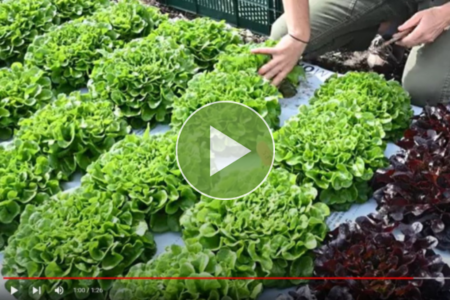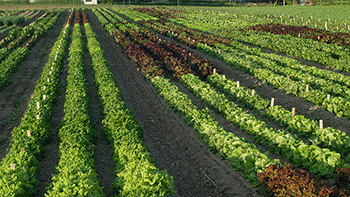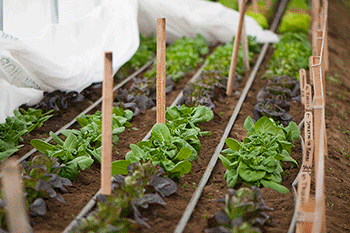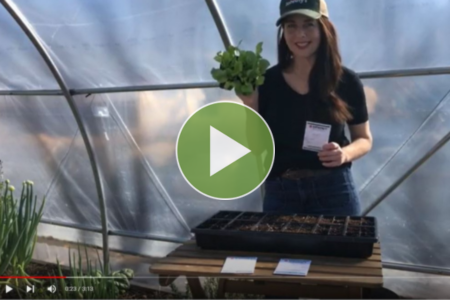- Lettuce Varieties | Quick-Reference Comparison Chart (PDF)
- Video: How to Grow Lettuce • From Seed to Harvest
- 'Bigelow' Organic Mini-Head Lettuce Variety
- Video: High-Value Crops & Varieties for Your Garden • Tutorial with Niki Jabbour
- Video: Baby Leaf Greens: 12 Picks for Market Growers | Johnny's Webinar Series
- Growing Salad Gardens: An Ultimate Guide by Niki Jabbour | Johnny's Webinar Series
- How to Choose & Grow the Best Lettuce | Tips for Every Grower
- Salanova Lettuce | Cutter Tool | Tech Sheet (PDF)
- Video: One-Cut Lettuces: Insights & Techniques for Small Farms | Johnny's Webinar Series
- Baby Leaf Lettuce | Variety Comparison Chart (PDF)
- Baby Leaf Greens: 12 Picks for Market Growers | Johnny's Educational Webinar Resources
- Baby Leaf Greens & Baby Leaf Lettuce | Technical Production Guide
- Full-Size Romaine (Cos) Lettuce Varieties | Comparison Chart (PDF)
- Growing Mini Versus Full-size Head Lettuce | A Look at the ROI
- Lettuce & Greens for Southern Growers | Johnny's Educational Webinar Resources
- Johnny's Planting & Harvesting Programs
- One-Cut Lettuces | Johnny's Educational Webinar Resources
- Salanova Lettuce | Tech Sheet (PDF)
- Video: Beat the Heat: Lettuce & Greens for Southern Growers | Johnny's Webinar Series
- Video: Salanova Lettuce | Growing, Preparing & Marketing
- Salanova Variety & Collection Specifications | 4-pp Brochure (PDF)
- Pelleted Lettuce | Key Growing Information
- Kolibri: Mini-Head Bibb Lettuce Variety
- Webinar Slide Deck | One-Cut Lettuces: Insights & Techniques for Small Farms | 60-pp PDF
- Lettuce | Full Head Varieties | Succession Planting Program
- Lettuce | Key Growing Information
- Webinar Slide Deck | Lettuce & Greens for Southern Growers | PDF
- Full-size Leaf Lettuce Varieties | Comparison Chart (PDF)
- Salad Mixes & Microgreens Mixes | 2-pp Spec Sheet (PDF)
- Growing Salad Gardens: An Ultimate Guide by Niki Jabbour | Johnny's Webinar Series
- Lettuce | Full-Head Varieties | Comparison Chart / Planting Program (PDF)
- Video: Baby Leaf Harvester for Greens, Mesclun, Spinach, Lettuces & Tender Aromatics
- Winter Growing Guide | Part 6: Recommended Crops & Varieties
- Video: The Advantages of Salanova® Lettuce | Johnny's Selected Seeds
- Prismatic Mini-Head Lettuce Mix from Johnny's
- Individual Salanova® Varieties | Comparison Chart (PDF)
How To Choose the Best Lettuce Varieties for Your Needs
Lettuce is a crop that offers something for every grower. Versatile, universally popular, and always in demand, it's a high-value crop at market and a staple in the home garden. Relatively easy and fast-growing, lettuce is also adaptable to a range of conditions, seasons, and growing methods.
With its great diversity, choosing which ones to grow can be a job in itself.
Johnny's runs an extensive lettuce trialing program to be sure the varieties we offer each year are the best available. Here is our guide to the basic types of lettuces, so you can decide which varieties are right for you, plus some of the fundamentals of lettuce growing success.
Basics for Every Lettuce Grower • Turnaround Time, Temperature, End-Product
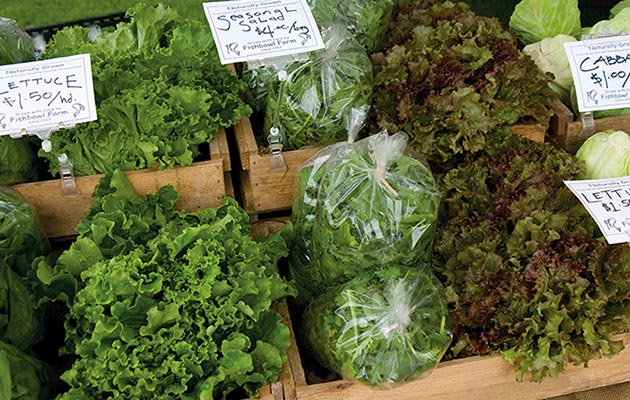
Above: Red and green lollo head lettuces and baby leaf mixes grown at Fishbowl Farm, in Bowdoinham, Maine.
Whether you are choosing varieties for the home garden or developing a full lettuce planting program for market sales, there are a few general considerations to take into account.
- Turnaround time. Lettuce (especially baby leaf) has a relatively short time to maturity. This means that succession planting—sowing at intervals—is a necessity if you want to have a continuous supply throughout the growing season. For more specifics, see our Succession Planting Interval Chart for Vegetables.
- Temperature. Lettuce prefers moderate temperatures and is best suited as a spring or fall crop; it tends to become bitter and bolt (flower and go to seed) in the heat. Some varieties are more tolerant of temperature extremes than others, so it is fundamental to choose the right varieties for each season.
- End-product. Lettuce production can focus on one or more end-products, from full-head and mini-head to baby leaf mixes, and some varieties are better for one or another end-use. It's important to understand your needs as you choose varieties and develop your planting program.
Choosing Lettuce Types
Head Lettuce: Full-Size Heads & Mini Heads
Most varieties of lettuce can be grown as full-size head lettuce, harvested by cutting at the base of the plant, and sold by the unit.
Mini-head lettuces are either standard head lettuce varieties that are planted at close spacing and harvested early, before they are fully mature, or, they are varieties that mature at a naturally small, compact size. In either case, the result is a single-serving sized head lettuce.
For market growers, mini-head lettuce can be more profitable than full-size heads; to learn more about the cost/benefit ratio of the two, read Growing Mini versus Full-Size Head Lettuce.
Head Lettuce Types:
- Butterhead. Generally grown to full-size heads, butterhead lettuce has a beautiful ruffled appearance, with a blanched heart and a delicate, sweet, and buttery flavor. "Boston" lettuce is a subtype of butterhead, with varieties that have a lighter green color, softer and smooth textured leaves, and nice big heads. Other butterheads can be darker shades of green, a little more compact, and have blistered/savoy leaves, or can be red butterheads.
- Bibb. Similar in appearance, texture, and flavor to butterhead, but smaller, bibb lettuces are generally grown for mini-heads.
- Crunchleaf. A range of newer lettuces with unique leaf and head forms, combining or demonstrating overlapping traits of icebergs, romaines, and other traditional lettuces—all with that popular high-crunch "tooth feel."
- Iceberg. Iceberg, also known as crisphead, forms a dense head resembling a cabbage. It offers a fresh, crunchy texture and sweet, mild flavor.
- Lollo. Lollo lettuces form loose heads with very frilly leaves that are often used for garnish. Lollo can also be used for baby-leaf production. The leaves are characteristically wide, and can be used for wraps in addition to garnishes.
- Oakleaf. These varieties form attractive, relatively dense, rosette-like heads of curly, crisp leaves that are characteristically deeply lobed and similar in shape to those of oak trees. Primarily grown for baby-leaf production; some varieties perform well when grown to full-head size.
- Romaine (Cos). Romaine is best known for its compact hearts of long, broad leaves. The outer leaves can also be used as wraps. The flavor is sweet, and the texture is crisp. Some romaines have a more open plant habit than those that form the classic tall, blanched hearts. The open forms do eventually blanch but not as much, and cannot be harvested strictly as hearts. Romaine lettuce does best when provided higher fertility than loose-leaf types require.
- Summer Crisp / Batavia. As the name suggests, summer crisp is the ideal choice for summer lettuce. It is relatively tolerant of hot weather and can be grown to either baby-leaf or full-head size. The full heads are heavy and compact. Similarly to romaine, summer crisp grows best with slightly more fertility than loose-leaf types. Summer crisp is also sometimes called French crisp or Batavia.
- Green Leaf / Red Leaf. These include varieties such as 'New Red Fire' and 'Tropicana'. They are commonly found in grocery stores, banded with the foil ties around them. Used for salad, sandwiches, or wraps.
Baby Leaf Lettuce and Cut-and-Come Again (CCA)
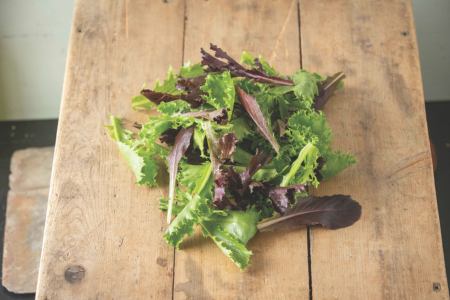
Varieties that are best for baby-leaf production have: 1) vigorous, uniform growth; 2) thick leaf textures; 3) upright growth habit. These varieties are all suitable for cut-and-come-again.
Essentially any lettuce variety can be grown as a "baby leaf" by planting the seed at high density and harvesting the leaves very young. The varieties we identify for baby-leaf production, however, are particularly well-suited because of their vigorous, uniform growth and thick leaf textures, as well as for their upright growth habit, making them easier to harvest and cleaner to harvest in the field. These varieties do not produce particularly good full heads if grown to maturity; the heads tend to be loose and lightweight.
Baby leaf lettuce is usually harvested at about 3–4 weeks from seeding. Some baby leaf varieties take up to 5–6 weeks to mature, though, even when spring-planted, and definitely when fall-planted. To harvest, cut baby leaf lettuce 1–2" above the ground, using a knife, shears, or a mechanical harvester.
All the varieties that we identify as suitable for baby leaf production can be used for cut-and-come-again (CCA) growing systems, meaning they will regrow after the first harvest, provided the basal growing point of the plant is not damaged when the leaf stems are cut. The quality and quantity of the second cut are typically lower than the first.
You will want to seed weekly to ensure a steady supply of baby leaf lettuce throughout the season.
Baby leaf varieties primarily include romaine, summer crisp, and oakleaf types. Johnny's also carries several lettuce mixes, comprised of multiple varieties that mature at similar rates. These mixes create an appealing assortment of color, texture, and loft. Some growers add herbs, edible flowers, baby brassica greens, baby specialty greens, sprouts or shoots to baby-leaf lettuces to create signature salad mixes.
One-Cut Lettuce
One-cut is an industry term for a type of head lettuce grown to full-head size, but when cut at the plant base, the individual leaves separate, creating a final product similar to baby leaf lettuce. Some one-cut varieties are grown for a single harvest and others in a cut-and-come again fashion.
Salanova is the industry standard one-cut type for baby-leaf production, and it excels in a variety of cultural settings, from the field to winter tunnels or as a hydroponic lettuce. Compared to traditional baby-leaf lettuce, it is more than 40% higher yielding, has better flavor and texture, and double the shelf life.
There are also mini-head one-cut lettuce varieties, which are a nice option for mixed packs or displays as well as salad mixes.
Selecting Lettuce Varieties by Seasonal Slot & Cultural Method
Once you have narrowed down the types of lettuce you want to grow, you can select specific varieties. You will most likely want to select several varieties for each of your intended production seasons—spring, summer, fall, and winter—depending on your latitude, microclimate, and cultural methods.
Spring Lettuce
Most lettuce varieties will excel in the spring. Increasing daylength speeds growth, and combined with moderate temperatures, can result in ideal growing conditions for lettuce.
Summer Lettuce
Summer-performing lettuces are characterized by strong bolt resistance, tipburn resistance, and acceptable flavor under heat stress. Even heat-tolerant varieties have upper limits of temperatures they can withstand. At lower latitudes and in geographic pockets of intense summer heat such as the South and Southwest US, most growers avoid outdoor lettuce production during the warmest part of the season.
Fall/Winter Lettuce
Conversely, some varieties are particularly frost-tolerant and good choices for a fall harvest or tunnel production. Fall/winter/cold-tolerant varieties are also selected for bottom rot resistance (soils stay wetter in cooler seasons) and ability to hold their shape and color in lower-light conditions.
- Shop lettuce varieties good for overwintering
- Shop lettuce varieties for winter harvest
- Shop lettuce varieties suitable for summer planting for a fall harvest
Lettuce For Hydroponics
Lettuce varieties that excel in hydroponics typically have a compact and upright growth habit to maximize greenhouse space; resistance to tip burn, which can be a problem for rapidly growing greens; resistance to bolting; and resistance to diseases, such as downy mildew, that are common in indoor growing environments.
Johnny's has lettuce varieties recommended specifically for hydroponics, selected on the basis of results of trials with independent hydroponic growers, in combination with our own variety knowledge and the information we receive from our suppliers.
- Browse our Digital Hydroponic Lettuce Catalog
Types of Lettuce Seed • Organic, Conventional, Pelleted
Johnny's offers different types of lettuce seed to accommodate the year-round needs and preferences of our customers. For lettuce, we offer over a hundred different varieties, in the following seed types. All our seed is non-GMO.
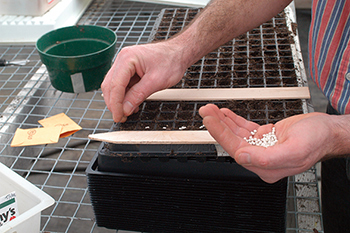
- Certified-Organic Lettuce Seed. Seed that has been harvested from plants grown strictly without the use of inputs disallowed by the USDA National Organic Program (NOP), and packed in a certified-organic product handling facility.
- Certified-Organic Lettuce Seeds with NOP-Compliant Pelleting. Pelleted seeds are coated with an inert substance to improve visibility, handling, and suitability for use in precision seeders. In this case, the substance is composed of materials approved for use in certified-organic production by the USDA NOP.
- Conventional Lettuce Seed. Produced under conventional growing and handling conditions.
- Conventional Lettuce Seed with NOP-Compliant Pelleting.
See our Quick Lettuce Reference Chart for a comprehensive list of all the lettuce varieties we carry, broken out by type; color; availability in organic, conventional seed, or pelleted seed type; and each variety's suitability for baby leaf, mini, or full-size head production. Use the filters on our lettuce product pages to return lettuce varieties that have the particular features you seek.
Pelleted Lettuce Seed
Because lettuce seed is small, we offer many of our varieties in pelleted versions. Pelleting can help make it easier to handle the seeds and sow the seeds accurately, either by hand or with a mechanical planter. Note, however, that the pelleting process reduces the shelf life of the seed; pelleted seed should be kept cool and dry and used within one year of purchase.
An additional benefit of using pelleted lettuce seeds is that the pelleting process can help improve germination. Lettuce seed can enter thermal dormancy when exposed to high temperatures, meaning it will not germinate at high temperatures. Many pelleted seeds undergo a priming process that broadens the temperature range within which the seeds will germinate, overcoming some of this thermal dormancy.
Lettuce Growing Tips
- Lettuce can be direct-seeded, but for an early harvest, or to make the most use of bed space, start seedlings in flats 3–4 weeks before transplanting.
- Seeds will germinate poorly if temperatures are too high; when starting seeds, choose a cool location and/or shade the flats during warm, sunny weather.
- Irrigate well—lettuce prefers consistent moisture, and drought-stressed plants will be bitter. If using pelleted seed, note that adequate and consistent moisture is required to dissolve the pelleted coating and enable the seed to germinate.
Additional Growing Resources
Lettuce Harvesting & Storage Tips
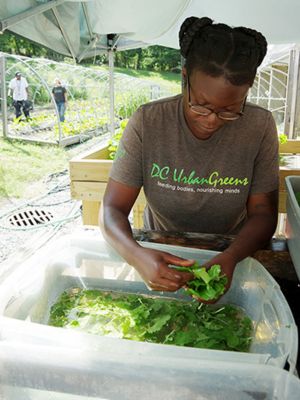
- Harvest lettuce by hand, or with a knife or a mechanical harvester, before the plant becomes bitter and bolts.
- Once harvested, lettuce should be cooled as soon as possible to remove field heat. Head lettuces can be hydrocooled and, except for romaine, iced, either by package icing or by bulk application to the top of a load.
- Baby leaf mixes are usually washed and dried before being packaged into bags or clamshells. Their shelf life will be extended by drying the leaves thoroughly before packaging and storing. Store refrigerated in plastic bags or tubs.
- Shelf life varies, but under optimal storage conditions, in the vicinity of 32°F (0°C) at 95–100% humidity, lettuce will keep for 7–21 days.


